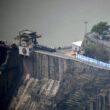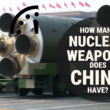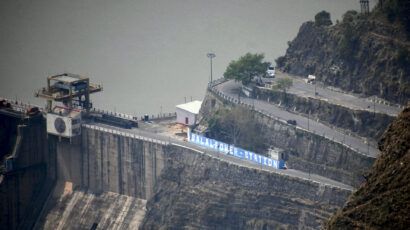On winter-safe deterrence and biological weapons
By Seth Baum, March 20, 2015
The status quo of large nuclear arsenals risks global catastrophe so severe that human civilization may never recover. If we care about the survival of human civilization, then we should seek solutions to make sure such a catastrophe never occurs. This is my starting point for exploring the potential for winter-safe deterrence. Perhaps, upon closer inspection, winter-safe deterrence will prove infeasible. But I do believe it is worth closer inspection. To that effect, I welcome this roundtable discussion and the broader conversation that my research has sparked.
I have defined winter-safe deterrence as military force capable of meeting the deterrence goals of today’s nuclear-armed states without risking catastrophic nuclear winter. Winter-safe deterrence recognizes two basic issues: first, large nuclear arsenals pose a devastating catastrophic risk; and second, nuclear-armed states may refuse to relinquish almost the entirety of their nuclear arsenals unless their deterrence goals are met through other means. Winter-safe deterrence thus aims to make the world safer given the politics of deterrence.
Personally, I would prefer that today’s nuclear-armed states simply decide that they no longer need deterrence based on the threat of massive destruction. Such destruction is immoral and against the spirit of international humanitarian law. To that effect, we should seek solutions that reduce the demand for this sort of deterrence, for example by improving relations between nuclear-armed states or by stigmatizing this deterrence. The ongoing initiative on the humanitarian impacts of nuclear weapons is enhancing precisely this stigma. I am proud to support the initiative. It is a first-best solution to nuclear war risk.
Winter-safe deterrence is a second-best solution because it avoids global catastrophe while leaving intact deterrence based on massive destruction. It is no surprise that winter-safe deterrence is controversial, because it forces us to consider which devastating weapons we would like militaries to have. This is a repugnant task. I assure you I take no joy in it. But if this task could prevent a major global catastrophe, then it is an important task to pursue.
In my research, I attempted an initial analysis of winter-safe deterrence. I do not claim to have any final answers, and I explicitly discourage governments from pursuing winter-safe deterrence until more thorough analysis has been conducted. The issues are just too complex for one research paper. While I could have done more research on my own before publishing, I decided that progress could be better made through open discussion. That said, I was cognizant of the risks that mere publication could pose, to the point that I even considered censoring myself. I am thus sympathetic to Brett Edwards’s thoughtful comments on the risks of discussing these ideas. He raises important issues on when international security policy research is too risky to publish. In this instance, I believe it would have been too risky not to publish the research, risking the possibility that the status quo would lead to global catastrophe.
My research considered a sizable list of weapons: small nuclear arsenals, conventional military force, conventional prompt global strike, neutron bombs, biological and chemical weapons, cyber weapons, and electromagnetic weapons. Perhaps there are other weapons also worth considering as replacements for deterrence with large nuclear arsenals; I would welcome any suggestions. I further considered these weapons for two types of destruction: destruction to infrastructure and destruction to human bodies. For humanitarian reasons, I hope that deterrence can succeed with threats to infrastructure alone. I do not know if it can, and would welcome any thoughts on that score, also.
Much of the conversation about winter-safe deterrence has focused on a hypothetical decision between deterrence with nuclear weapons and deterrence with non-contagious biological weapons (NCBWs). I regret that the conversation has been framed in this way. Winter-safe deterrence does not require picking one weapon over another. To the contrary, it can be achieved via combinations of weapons, including small nuclear arsenals. But my suggestion of some constructive role for NCBWs has been controversial, and I am glad for this to be debated.
Gregory Koblentz, Martin Furmanski, and Sonia Ben Ouagrham-Gormley all argue that NCBWs are not effective deterrents because their effects are too unpredictable and too easy to defend against, among other reasons. In short, they cannot reliably cause enough harm in counterattack. These points are well taken. The biggest question they raise in my mind is whether these technological shortcomings of NCBWs may be altered by technological advance, making them more suited for deterrence. Given advances in biotechnology, I hesitate to place bounds on what may be possible. I would be interested in further comments on this.
Ben Ouagrham-Gormley says something that catches my eye: “Non-contagious does not mean less lethal.” I am surprised to read this. It is my understanding that NCBWs can only kill people within the area in which they are released, whereas contagious biological weapons can spread, potentially even killing people worldwide. Could NCBWs spread as widely? If not, then how could NCBWs be as lethal?
Another point I am left unclear on is the proliferation risk posed by NCBWs. On one hand, Gigi Kwik Gronvall writes that “biological weapons development is within the technical capability of most countries,” suggesting a large proliferation risk. On the other hand, Ben Ouagrham-Gormley describes how countries and nonstate actors have repeatedly tried and failed to develop biological weapons, suggesting a small proliferation risk, or perhaps even none at all. I am unsure how to resolve this apparent conflict.
Gronvall’s comments on the international bans on biological weapons raise a difficult issue. If NCBW deterrence were technologically feasible, pursuing it could significantly harm the international treaty system. However, it could also help avoid global catastrophe from nuclear war. I hope we never have to make such a difficult choice, but if I had to choose, I would choose to avoid global catastrophe. That is, unless harming the international treaty system could itself cause global catastrophe (and perhaps it could), I would favor accepting this harm to avoid global catastrophe from nuclear war. When it comes to humanity’s long-term survival, the stakes are simply too high not to make hard choices.
But we should hope that this is a false choice. We should hope that other options exist such that we can avoid global catastrophe from nuclear war without harm to the international treaty system.
In closing, I thank the contributors to this roundtable for their thoughtful and constructive comments and look forward to continuing the discussion.
Share: [addthis tool="addthis_inline_share_toolbox"]














